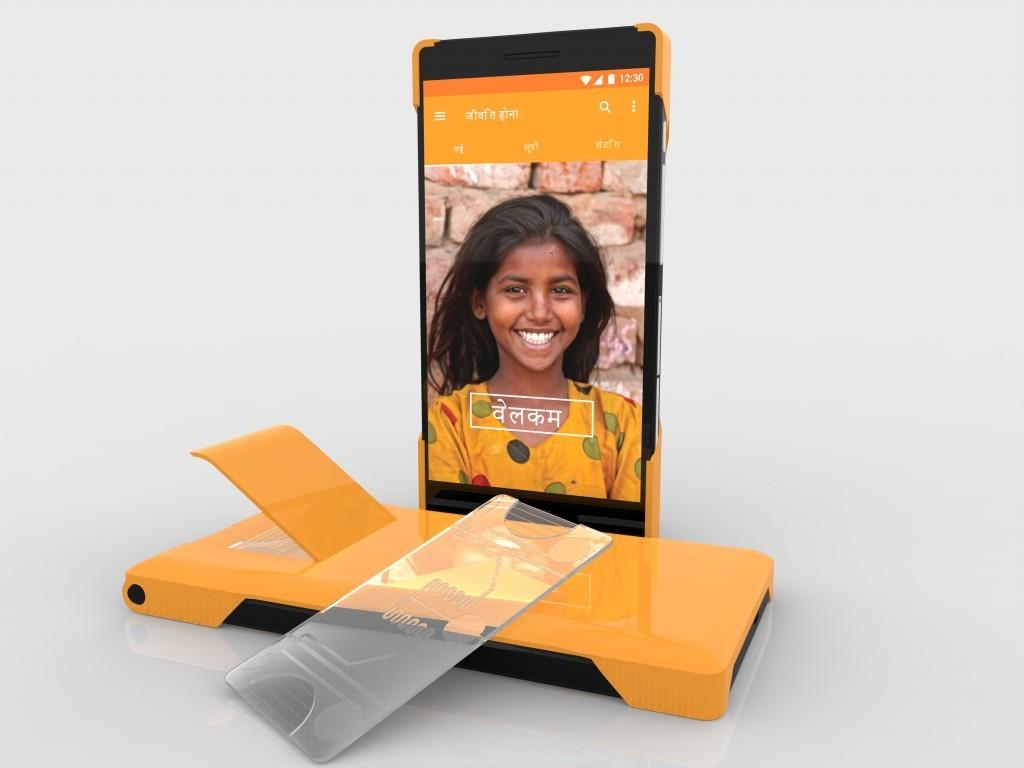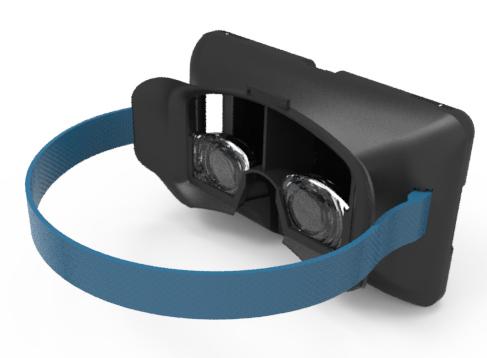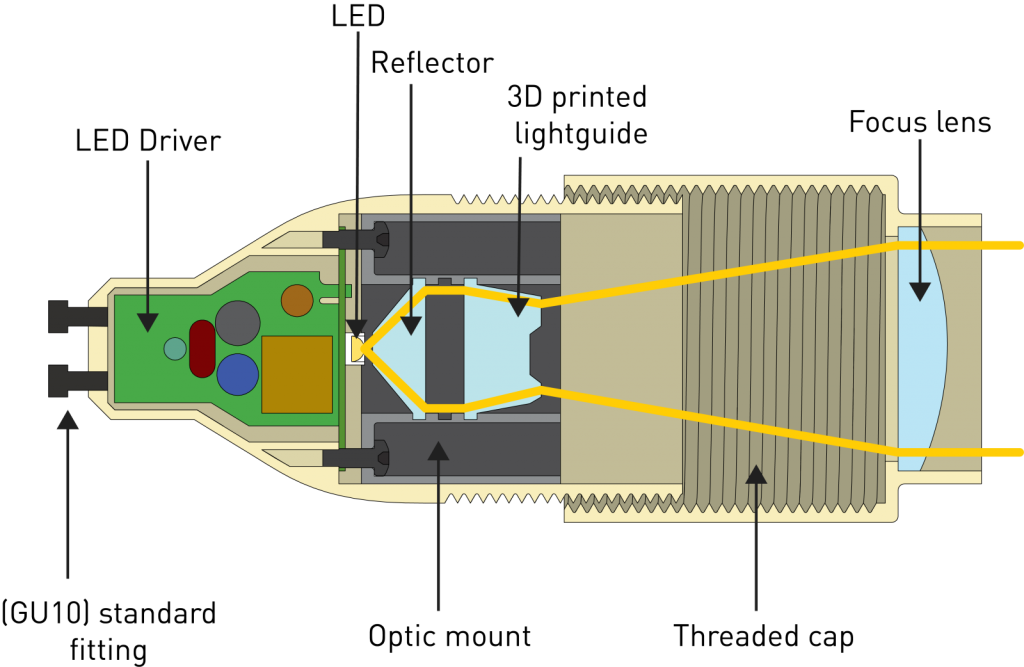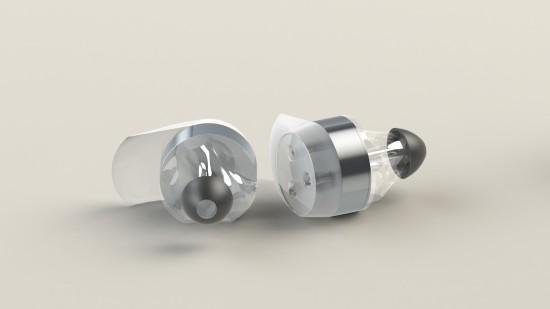 Students at TU Delft of the Netherlands are not only enthused about using 3D printing to do good in the world, and especially developing countries, but indeed they very well may have created something that has the potential to develop into a useful worldwide trend. They are the creators behind numerous complex projects showcased in a new challenge designed to embody a collection of devices 3D printed with Luxexcel’s transparent materials and optics.
Students at TU Delft of the Netherlands are not only enthused about using 3D printing to do good in the world, and especially developing countries, but indeed they very well may have created something that has the potential to develop into a useful worldwide trend. They are the creators behind numerous complex projects showcased in a new challenge designed to embody a collection of devices 3D printed with Luxexcel’s transparent materials and optics.
![]() Founded by Richard Van De Vrie, Luxexcel is a company that has received many accolades and awards themselves in the optics and lighting industry; now, they give back to others and the younger generations still studying and learning by giving them the privilege of showing the world what their bright minds have to offer not only in terms of grasping and innovating technology like 3D printing, but also using it to make welcomed changes in numerous sectors, as well as offering mindblowing technological accents and conveniences.
Founded by Richard Van De Vrie, Luxexcel is a company that has received many accolades and awards themselves in the optics and lighting industry; now, they give back to others and the younger generations still studying and learning by giving them the privilege of showing the world what their bright minds have to offer not only in terms of grasping and innovating technology like 3D printing, but also using it to make welcomed changes in numerous sectors, as well as offering mindblowing technological accents and conveniences.
Diagnosing and treating malaria is serious business around the world, but most often it’s not available due to isolation, poverty, and lack of medical professionals in the areas where assistance is needed most. TU Delft students, vying for the Luxexcel Innovative Application Student Award 2015, have used Luxexcel technology to create an integrated 3D product called Vasu that functions both as a transparent smartphone case and as a diagnostic device via an app. It can feasibly function to diagnose both the Plasmodium vivax and Plasmodium falciparum strains of malaria. While the app assists the medical professional, the bulk of the work is done by the 3D printed case itself as it functions to:
- Collect and analyze blood samples through a disposable chip
- Assess the quantity of parasites in the patient’s bloodstream
- Perform additional assessments for thorough analysis
The students responsible for the impressive 3D printed device state that with Luxexcel’s affordable 3D printing optical technology using transparent materials, malaria diagnosing and treatment could become extremely affordable and much more available. Specifically, students stress how important it is to diagnose and treat the disease as it is “holding back development” in places like India, terribly stricken with the disease.
“Current quick and pocket-sized tests are only able to tell if someone has malaria and few could tell which species of the parasite it is. There are no cheap, pocket-sized tests that can tell how severely the disease has developed and which species has infected the patient–information which is needed to submit drugs accurately and quantitatively,” states the student team. “Vasu is the first cheap and pocket-sized quantitative malaria test. The current Vasu is made for a Huawei Ascend P6, 2013, with the casing made specifically for a smartphone, using polypropylene with a chip made from poly(methyl methacrylate).”
Another innovative creation is that of the 3D printed ACryx shoes created by one student who chose not only to use Luxexcel’s 3D printed transparent material, but also the flexible and strong NinjaFlex filament. Offering a way to produce easily customized and affordable shoes, the designer took the impetus to mix media for versatility, spotlighting two materials both suited for the product.
“It shows the different shapes, highest standards in transparency and textures Luxexcel can achieve–and also shows how to implement this in many more industries besides just the optics industry,” stated the student on the merits of the fully 3D printed ACryx shoes.
Also in the highlights are the 3D printed ‘Raybender,’ which is one of the products that you wonder how it took so long for one to think of, as yes, the lights in studios and art museums generally point right onto the artwork causing a definite and distracting blob of light on the work at hand. Using lights as the perfect medium for Luxexcel’s expertise in optics, the student industrial artist sees the Raybender as a logical, affordable, easily manufactured piece that operates with a light guide once the artwork is 3D scanned. The 3D printed apparatus works to evenly distribute the light rather than causing a glare.
“By using a light guide, a very high efficiency can be achieved,” states the student artist. “Because of its modular design, the Raybender is also easy to service, and replacing a part is never more than three steps away. Using high quality [3D printed] materials results in a durable quality product, with the ability to last a lifetime.”
 Another exciting project idea that should garner its share of the votes is the Luxexcel VR headset, meant to improve on the world of virtual reality with better focus due to a 3D printed lens built into the design. With the opinion that current VR models do not allow for the efficiency, accuracy, and personal customizations really needed for facial shape and nose size, the student used Luxexcel technology for 3D printed optics.
Another exciting project idea that should garner its share of the votes is the Luxexcel VR headset, meant to improve on the world of virtual reality with better focus due to a 3D printed lens built into the design. With the opinion that current VR models do not allow for the efficiency, accuracy, and personal customizations really needed for facial shape and nose size, the student used Luxexcel technology for 3D printed optics.
“The Luxexcel VR headset will excel in giving the user the best possible virtual reality experience by maximizing their field of view,” states the student behind this innovation. “This is done by using 3D printed lenses in the design. After analyzing the user’s eye-socket shape, interpupillary distance and eye defects, a customised optical design can be generated that gives the users the most optimal experience possible. This also makes it possible for people who wear glasses to use the headset without having to keep their glasses on.”
Other products listed in the showcase are:
- CheckMate — a chess game employing 3D printing, LEDs, and other electronics
- Veil — employing 3D printing in the exposition of art for designing and printing covers
- STUTTGART — uses unique 3D printed lighting to inspire illumination of currently unused or lit space
- Porthos Earphones — employs new and innovative 3D printed earbuds for comprehensive quality
- Lightfield Camera Module — 3D printed lenses that see like a bug does, offering maximum focus
- Apnea Brace — employs 3D scanning and 3D printing for creation of an extremely customized ‘smart’ brace
- Luminous Watch — uses 3D printed inner display as highlight for a sleek, modern watch that makes fascinating light patterns
While the 3D printing industry is awe-inspiring overall, this condensed showcase on its own is truly impressive, showing us what relevant and high-tech inventions student minds are busy creating, showing the potential everywhere from the medical field to fine art, complex electronics, and apparel. This is the younger generation, who for the most part, are just beginning their journey into the world of innovation. If this is what they’ve got for us so far, the exciting path into the future of technology is well-lit indeed. Does one of these innovations strike your fancy? If so, be sure to vote for it and perhaps win a Luxexcel sample kit.
Discuss your thoughts on the innovations you’ve seen here, as well as how you think 3D printing in optics will make an impact in the future, in the Luxexcel Innovative Application Student Award 2015 forum thread over at 3DPB.com.
Subscribe to Our Email Newsletter
Stay up-to-date on all the latest news from the 3D printing industry and receive information and offers from third party vendors.
You May Also Like
Precision at the Microscale: UK Researchers Advance Medical Devices with BMF’s 3D Printing Tech
University of Nottingham researchers are using Boston Micro Fabrication‘s (BMF) 3D printing technology to develop medical devices that improve compatibility with human tissue. Funded by a UK grant, this project...
3D Printing Webinar and Event Roundup: April 21, 2024
It’s another busy week of webinars and events, starting with Hannover Messe in Germany and continuing with Metalcasting Congress, Chinaplas, TechBlick’s Innovation Festival, and more. Stratasys continues its advanced training...
3D Printing Webinar and Event Roundup: March 17, 2024
It’s another busy week of webinars and events, including SALMED 2024 and AM Forum in Berlin. Stratasys continues its in-person training and is offering two webinars, ASTM is holding a...
3D Printed Micro Antenna is 15% Smaller and 6X Lighter
Horizon Microtechnologies has achieved success in creating a high-frequency D-Band horn antenna through micro 3D printing. However, this achievement did not rely solely on 3D printing; it involved a combination...
































